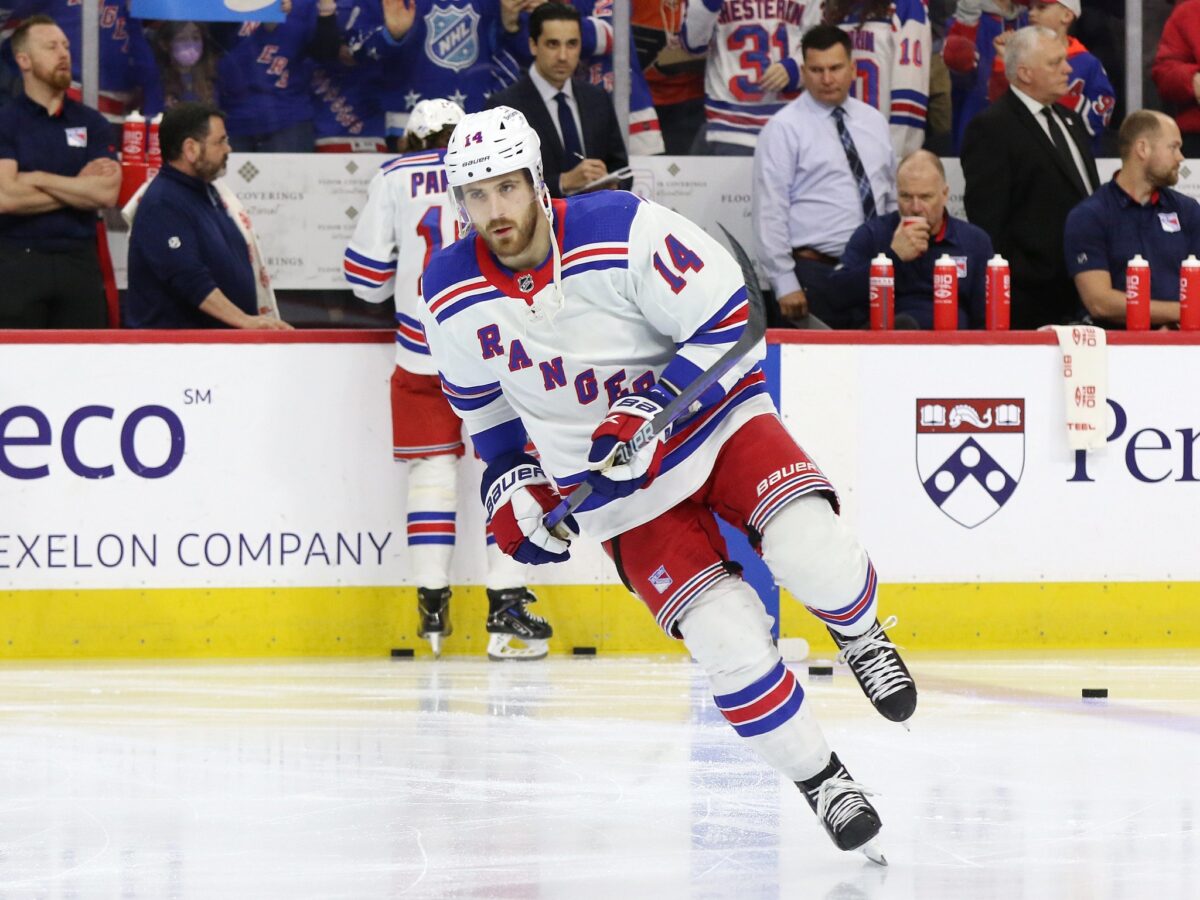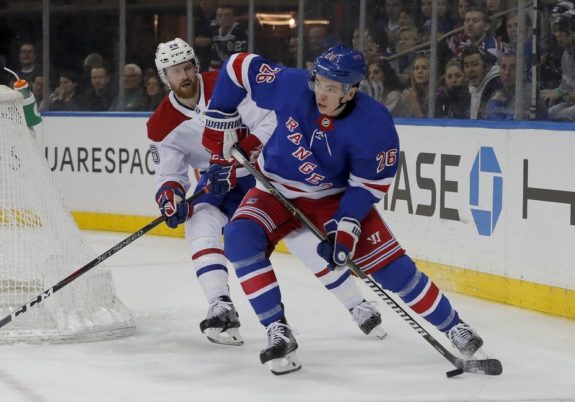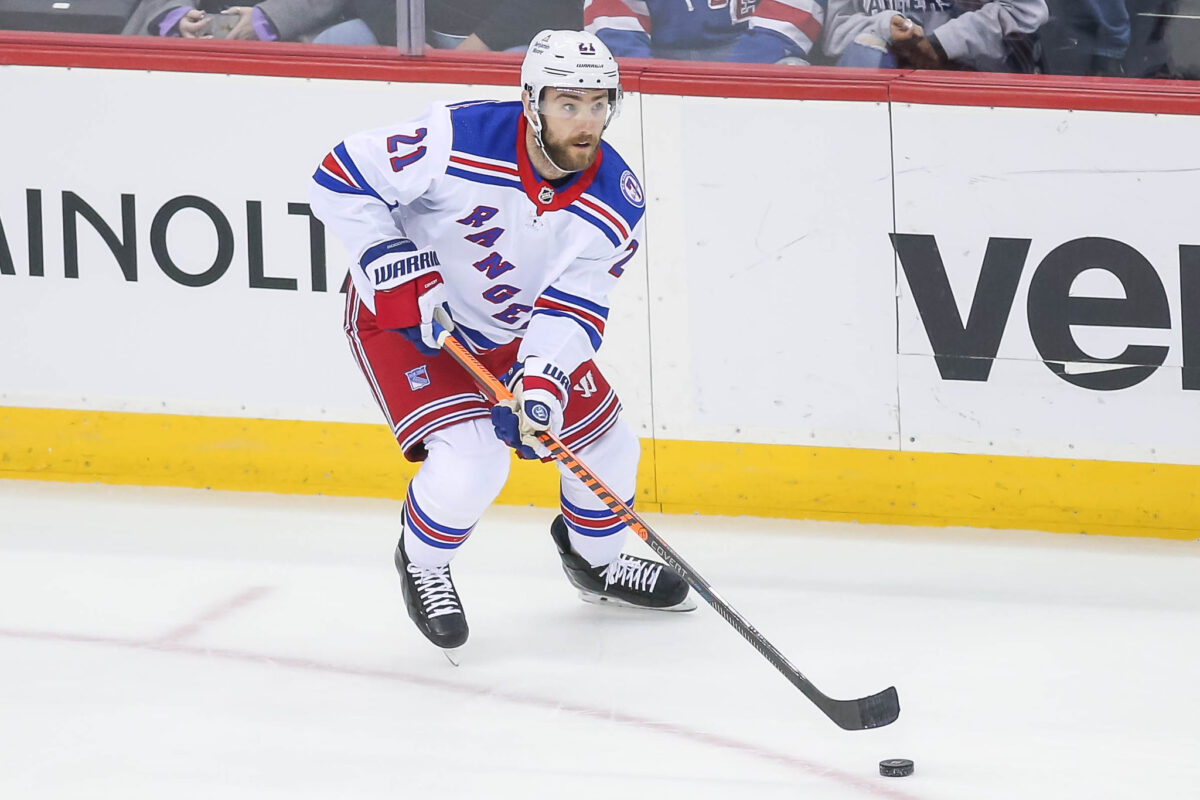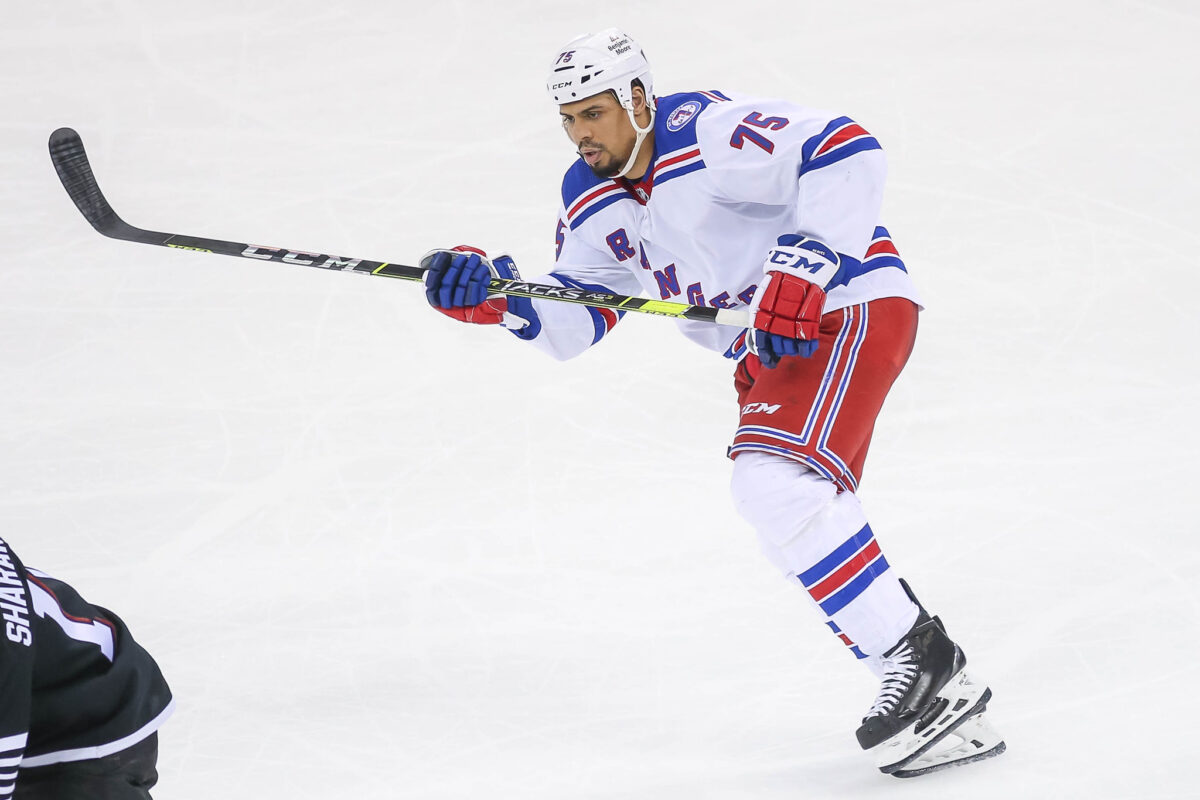The New York Rangers came out of a very eventful NHL trade-deadline period looking like a legitimate four-line team for the first time this season.
Along with a top-six forward group that added star right wings Vladimir Tarasenko and Patrick Kane, the Kid Line (outdated name) of Kaapo Kakko, Alexis Lafreniere and Filip Chytil has continued to thrive. It was the return of Tyler Motte, however, that sent a sizable portion of the fan base into a frenzy.
The bottom-six buzzsaw, beloved at Madison Square Garden after his heart-and-soul play endeared him to the faithful in last year’s playoffs, made his way back to New York before the deadline again and turned out to be the final piece of a revamped fourth line. With Motte joining Jimmy Vesey and Barclay Goodrow, coach Gerard Gallant could deploy a forward unit that defended, played with physicality and speed, controlled the puck below the hashmarks in the offensive zone and irritated opponents’ top lines.

Yet as impressive as the trio has often been since being formed, it hasn’t been passing the eye test of late. The line has seemingly spent more time defending – and sometimes scrambling – in its own zone rather than driving play and grinding out tough shifts cycling around the opponents’ net. It turns out that statistics confirm what was hard to miss: The unit posted some ugly numbers in a seven-game stretch from March 21-April 2, with a 40.30 Corsi for percentage, 41.67 shots for percentage and 45.05 expected goals for mark in that span.
The Rangers were outshot 49-35 at 5-on-5 while Motte, Vesey and Goodrow were on the ice in those games. The fact that the Blueshirts were only outscored 4-2 with the fourth line on during that time is more of a credit to the club’s outstanding recent goaltending from Igor Shesterkin and Jaro Halak than the efforts of that forward unit.
Rangers Need Fourth Line at Its Best to Create Lineup Balance
In short, for the Rangers to truly be considered a four-line outfit, the fourth line must rediscover its game, lest it become a liability that gets exposed in the playoffs.
That may have begun to happen in the Blueshirts’ latest game April 5, as the individual members of the line certainly made a big impact in an exhilarating 6-3 home victory over the Tampa Bay Lightning. Motte scored twice, Goodrow recorded two assists and Vesey one, with the group posting a collective plus-5 rating. The unit wasn’t together consistently, however, as Vesey moved up to the right wing with Chris Kreider and Mika Zibanejad with the Rangers dressing 11 forwards and seven defensemen because Patrick Kane sat out with a lower-body issue.
Despite the potency of the top three lines, there should be no mistaking how important the Vesey-Goodrow-Motte combination will be in the postseason. The ostensible top two lines centered by Zibanejad and Vincent Trocheck are largely high-end skill groupings, expected to generate opportunities off the rush and from quick puck movement. The Kid Line, in contrast, is the club’s best below the circles, able to generate sustained pressure in the offensive zone that leads to scoring chances.

The fourth line’s style which is similar to that of Kakko-Chytil-Lafreniere, save for considerably less expectation of offense, balances the forward units. In the grind-it-out ethos of the NHL Playoffs, the Rangers will require more than one unit that can effectively battle for pucks along the walls and wear down an opponent defensively. The Blueshirts can’t afford to have that happen consistently in their own zone instead of the opponent’s when their fourth line is on.
“I think we know our identity,” Motte said after his line delivered a strong performance in a 4-2 victory over the Pittsburgh Penguins on March 16. ” … We know what works now, we just gotta continue to keep pushing. We get in on the forecheck and create a little bit of offense too, try and stay reliable defensively, and hopefully we can create a little momentum.”
In Motte’s first 12 games back in a Rangers sweater this season, the trio did just that, posting a 52.54 CF% and 60.00 GF%, with 20 high-danger chances for to eight against. Those gaudy numbers show what’s possible for the line.

The underwhelming stats of the recent seven-game sample, however, speak to a somewhat alarming alternate identity for the trio. Gallant needs to be confident he can employ that line in most situations; the three players’ pedigrees as sound 200-foot presences suggest that he should be able to do so. It’s difficult to know why the high-energy unit hadn’t been as advertised recently, but the performance of the trio against the Lightning – albeit not as a unit – should in theory allow Gallant to breathe easier.
Effective Fourth Lines Have Been Critical to Rangers Playoff Runs of Recent Past
Whatever the reason for the late-season dip in effectiveness, the forward group that sparked so much excitement when it was put together has to consistently generate agita-inducing shifts for the opposition. The Rangers have boasted difference-making fourth lines as integral parts of their last three deep playoff runs: Motte and Goodrow teamed with the now-departed Ryan Reaves to form a disruptive, irritating trio in last year’s push to the Eastern Conference Final; Brian Boyle, Dominic Moore and Derek Dorsett/Dan Carcillo were a handful down low for opponents as the Rangers surged into the Stanley Cup Final in 2014; Moore, Tanner Glass and James Sheppard formed a brawny unit that stirred things up in the postseason to help the Blueshirts advance to the 2015 East Final.
Related: 4 Rangers to Watch During the Final Stretch
With the Rangers likely to finish in the third playoff spot in the Metropolitan Division despite their current 11-2-2 surge, it wouldn’t be surprising if the club has some trouble getting motivated for its final four regular-season games. Perhaps Motte, Goodrow and Vesey have been pacing themselves to a degree – whether consciously or unconsciously – and are starting to crank up their high-revving motors again in advance of Game 1 of the playoffs April 17.

Gallant certainly hopes so. Getting through the loaded East playoff bracket will require the Rangers to receive contributions from all of their forward units – including the one that has the potential to be as consequential as fourth lines of recent Blueshirts postseason runs were.
Advanced statistics courtesy of naturalsattrick.com.
